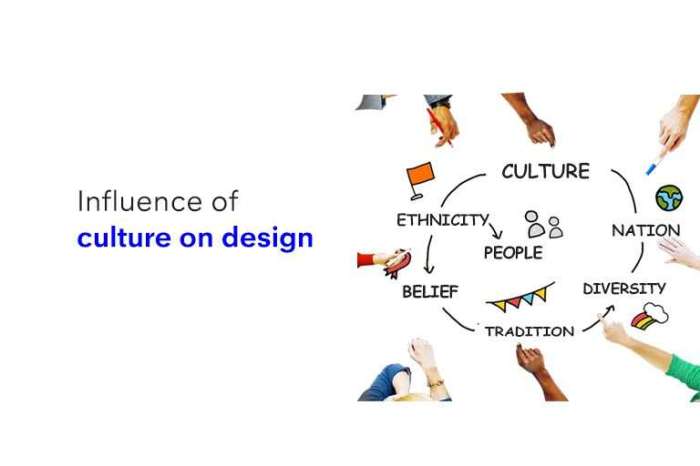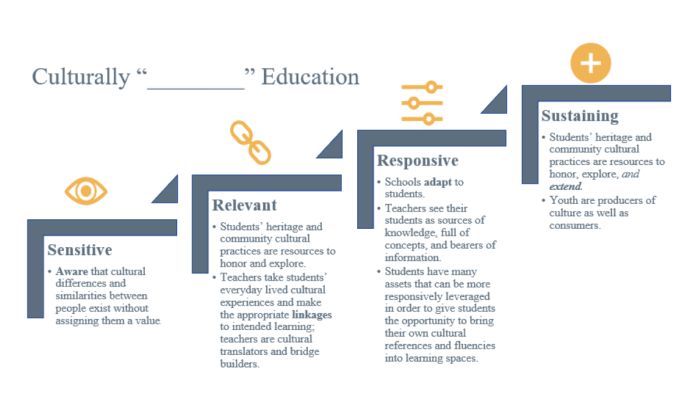Designing for a global audience requires more than just aesthetically pleasing visuals; it demands a deep understanding of cultural nuances. Ignoring cultural sensitivities can lead to misinterpretations, offense, and ultimately, project failure. This guide provides ten crucial steps to navigate the complexities of culturally sensitive design, ensuring your project resonates authentically and respectfully with its intended audience.
From initial research into key cultural dimensions like individualism versus collectivism to iterative testing and feedback incorporation, we’ll explore practical strategies for creating inclusive and impactful designs. We’ll delve into methods for adapting design elements like color palettes, imagery, and typography to align with specific cultural contexts, emphasizing the importance of user research and collaboration with cultural consultants.
Understanding Cultural Nuances

Thorough understanding of cultural nuances is paramount in successful design projects. Ignoring cultural contexts can lead to designs that are not only ineffective but also offensive or even harmful to the intended audience. This necessitates a robust research phase to ensure designs resonate positively and achieve their intended purpose.
Successful design hinges on understanding how culture shapes user behavior, preferences, and expectations. Overlooking these aspects can lead to projects that fail to meet user needs, alienate target audiences, and ultimately damage a brand’s reputation. This section explores key cultural dimensions and their impact on design decisions.
Key Cultural Dimensions and Their Influence on Design
Understanding key cultural dimensions provides a framework for culturally sensitive design. Failing to consider these differences can lead to significant misinterpretations and project failures. The following dimensions are particularly relevant:
- Individualism vs. Collectivism: Individualistic cultures prioritize individual needs and achievements, while collectivistic cultures emphasize group harmony and interdependence. Design for individualistic cultures might highlight personal achievements and unique features, whereas designs for collectivistic cultures might focus on community benefits and shared experiences.
- High vs. Low Context Communication: High-context cultures rely heavily on nonverbal cues and shared understanding, while low-context cultures emphasize explicit and direct communication. Design for high-context cultures might use imagery and symbolism more extensively, while low-context designs prioritize clear and concise textual information.
- Power Distance: This refers to the extent to which less powerful members of a society accept and expect unequal power distribution. Designs in high power distance cultures might emphasize hierarchy and authority, while those in low power distance cultures might promote equality and participation.
- Uncertainty Avoidance: This dimension reflects a society’s tolerance for ambiguity and uncertainty. High uncertainty avoidance cultures prefer clear structures and predictable outcomes, requiring designs that are straightforward and unambiguous. Low uncertainty avoidance cultures are more comfortable with ambiguity and risk, allowing for more creative and unconventional design approaches.
- Time Orientation: Cultures differ in their perception of time – some prioritize long-term planning, while others focus on immediate gratification. Designs for long-term oriented cultures might emphasize sustainability and future benefits, whereas designs for short-term oriented cultures might focus on immediate results and convenience.
Examples of Cultural Misunderstandings and Their Impact
Cultural misunderstandings can significantly hinder a design project’s success. These misinterpretations can range from minor inconveniences to major project failures, impacting user adoption, brand perception, and even legal compliance. The following table illustrates some examples:
| Cultural Dimension | Potential Misunderstanding | Design Impact | Mitigation Strategy |
|---|---|---|---|
| High vs. Low Context Communication | Using overly literal language in a high-context culture, leading to misinterpretation of the intended message. | Users may not understand the design’s purpose or functionality. | Employ visual cues and implicit messaging in high-context cultures; use clear and explicit language in low-context cultures. Conduct thorough user testing with target audiences. |
| Individualism vs. Collectivism | Promoting individual achievement in a collectivist culture, which may be perceived as boastful or insensitive. | Users may feel alienated or excluded from the design’s message. | Focus on community benefits and shared experiences in collectivist cultures; highlight personal achievements and unique features in individualistic cultures. |
| Color Symbolism | Using a color associated with mourning in one culture to represent joy or celebration in another. | The design could be offensive or misinterpreted, leading to negative brand perception. | Conduct thorough research on color symbolism in target cultures. Consult with cultural experts or local stakeholders. |
| Religious and Cultural Symbols | Using religious or cultural symbols inappropriately or without understanding their significance. | The design could be highly offensive and result in legal issues or boycotts. | Avoid using religious or cultural symbols unless fully understanding their context and meaning within the target culture. |
| Gender Roles | Using gender stereotypes in design that are not reflective of the target culture’s norms. | The design may alienate or offend segments of the population. | Ensure representation reflects the diversity of the target culture and avoids perpetuating harmful stereotypes. Consult with diversity and inclusion experts. |
Testing and Iteration for Cultural Appropriateness

Ensuring a design’s cultural sensitivity requires rigorous testing and iterative refinement. This process involves actively seeking feedback from the target audience to identify and address potential cultural misinterpretations or biases. By incorporating user feedback throughout the design process, we can create a more inclusive and effective product.
Testing the design’s cultural appropriateness is crucial for its success and acceptance within the target culture. This process allows for the identification and rectification of any culturally insensitive elements before the final product is launched.
Methods for Testing Cultural Sensitivity
Several methods can effectively assess a design’s cultural sensitivity. Usability testing, for example, allows designers to observe how users interact with the design in a real-world setting, revealing potential usability issues stemming from cultural differences. Focus groups provide a platform for in-depth discussions and exploration of cultural perceptions and interpretations. Surveys, on the other hand, allow for broader data collection from a larger sample size, identifying trends and patterns in user feedback. Each method offers unique insights, and a combination of these approaches often yields the most comprehensive understanding.
Addressing Potential Cultural Biases During Testing
Cultural biases can inadvertently emerge during testing. For example, testers might exhibit confirmation bias, seeking to confirm their pre-existing assumptions about the target culture. Similarly, participants might hesitate to offer critical feedback due to social desirability bias or power dynamics. To mitigate these biases, researchers should employ diverse testing teams, use culturally appropriate testing materials and methods, and create a safe and inclusive testing environment that encourages honest feedback. Utilizing blind testing, where testers are unaware of the design’s purpose or the research hypothesis, can further minimize bias.
Communicating Design Decisions to Diverse Stakeholders
Effectively communicating design decisions to stakeholders with diverse cultural backgrounds requires sensitivity and clear, concise language. Using visual aids, such as mockups and prototypes, can facilitate understanding, especially across language barriers. Translating materials into multiple languages is crucial. Furthermore, it’s essential to provide context for design choices, explaining the rationale behind specific design elements and their alignment with cultural considerations. This transparency builds trust and fosters collaboration. For instance, when explaining the use of a specific color, explain its cultural significance in the target market, not just its aesthetic appeal.
Iterative Design Refinement Based on Cultural Feedback
The iterative design process, informed by cultural feedback, is crucial for achieving cultural appropriateness. This involves a cyclical process of testing, analyzing feedback, refining the design, and retesting. The flowchart below visually represents this process:
[A flowchart would be inserted here. The flowchart would visually depict the iterative process: Start -> Design Prototype -> User Testing (with various methods indicated, such as usability testing, focus groups, surveys) -> Analyze Feedback -> Refine Design (based on feedback addressing cultural nuances) -> Repeat testing until satisfactory level of cultural appropriateness is achieved -> Final Design. Arrows would connect each stage, indicating the flow of the process.]
Last Recap

Creating truly culturally sensitive designs is an ongoing process of learning, adaptation, and respect. By following these ten steps, designers can move beyond superficial aesthetics and craft meaningful experiences that resonate deeply with diverse audiences. Remember, the goal isn’t simply to avoid offense, but to build bridges and foster genuine connection through thoughtful and inclusive design practices. The iterative nature of this process, involving continuous feedback and refinement, ensures a design that not only meets but exceeds expectations, fostering trust and positive engagement.